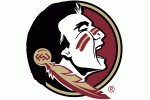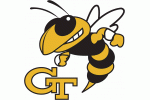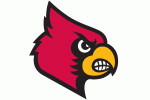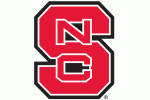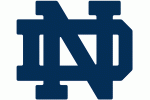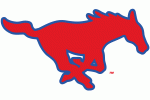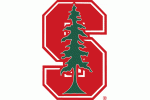The latest Kane Klassic provides an interesting, if puzzling, take on paper class enrollment during the 2004-2005 season.
Well, it looks like Dan Kane read the Wainstein Report.
Two-and-a-half weeks after the release of Kenneth Wainstein's expose of Debby Crowder's "shadow curriculum", the News and Observer's Dan Kane offers a look at the course enrollments of the 2005 UNC national championship team during that championship season. Kane writes:
During the season that the UNC men’s basketball team made its run to the 2005 NCAA championship, its players accounted for 35 enrollments in classes that didn't meet and yielded easy, high grades awarded by the architect of the university’s academic scandal...
Of the 35 bogus class enrollments, nine came during the fall semester of 2004, when eligibility for the spring was determined. Twenty-six were during the spring semester, when the season climaxed with a victory over Illinois in St. Louis.
Other than the specific numbers, which were detailed in the Wainstein Report, this is really nothing new. It had been common knowledge since the Hartlyn-Andrews Report in 2012 that members of the 2005 team were in aberrant classes, long before Mary Willingham and Rashad McCants drew attention to them.
Kane also takes a swipe at Roy Williams, implying that the Hall of Fame coach changed his answers about why men's basketball players stopped majoring in AFAM in the two years between being asked at a press conference and Williams' interview with Wainstein:
Four months later, at a press conference, an N&O reporter asked Williams why his players had stopped taking AFAM paper classes by the start of the fall 2009 semester. Was it because Crowder had retired, or did someone in the program notice something wrong?
Williams responded: "You say we either did something, or we didn’t do something. Maybe guys, girls, just decided not to take certain classes."
…
When Wainstein’s report came out, it included new information from Williams that provided a possible explanation why his players weren’t enrolling in AFAM classes.
He told Wainstein’s investigators that shortly after he arrived at UNC, he was concerned that so many of his athletes were majoring in AFAM; the 2005 team alone had 10 of 15 players with that major. He said he told one of his assistant coaches, Joe Holladay, to make sure they weren’t being steered to the major.
Gee, I can't imagine why a coach would give a PR-ish answer at a random press conference versus what he would say to a former federal prosecutor charged by UNC to get answers about the AFAM fraud two years later.
As for the main thrust of the article, there is no new reporting here. All of Kane's figures come directly from the Wainstein Report, which has been in the public domain for nearly three weeks now. And is often the case, Kane Klassics tend to translate well to headlines and conclusions that fit neatly into 140 characters and can be parroted by national media. But as is also often the case, Kane presents the story in such a way as to fit a narrative and without necessary context.
The Wainstein Report showed that there were nine enrollments of basketball players in paper classes created by Crowder in the fall of 2004. The problem is, there is no way of knowing from that data how many players accounted for the nine enrollments. McCants' appearance on Outside the Lines in June showed a snippet of his transcript including his schedule from Fall 2004 which includes enrollment in two paper classes, AFAM 41 and AFRI 121. Four players (1 was McCants) were in AFAM 41, and another player besides McCants was in AFRI 121. Of course there were also 11 non-athletes in AFAM 41 (out of 30 total) and four in AFRI 121 (out of 9). There were eight total Crowder paper classes that semester, meaning three of them had no basketball players at all.
In the spring of 2005, there were a total of nine Crowder paper classes offered, of which basketball players were enrolled in five for 20 total enrollments. AFAM 69 had six player enrollments out of 39 total students, 14 of which were not athletes. AFAM 65 and AFAM 71 each had five enrollments (McCants was in AFAM 65), but each of those courses were very large, with AFAM 71 having 39 non-athletes out of 76 total and AFAM 65 having 60 non-athletes out of 100 total. Kane also includes independent studies sections in his counting of basketball enrollments in "bogus" classes for spring 2005, but oddly does not include them for the fall of 2004.
The takeaway there is that there were a number of basketball players taking paper classes, but apparently so were a lot of other people. Plus, given how many AFAM majors were on the team, high AFAM enrollment is not wholly unexpected.
So then the interesting part of Kane's article is, why the focus on paper class enrollment during the season? If the AFAM scheme was designed to keep athletes eligible, why not focus on the enrollments prior to the 2004-2005 season?
There are three main requirements to be met for NCAA eligibility from year to year: 1) a student-athlete must earn 24 credit hours the preceding year and at least 6 hours per term; 2) he/she must maintain a minimum GPA (1.6 for rising sophomores, 1.8 for rising juniors, and 2.0 for rising seniors); and 3) he/she must maintain progress towards a degree program starting as a junior (which is when UNC requires students to declare majors). In a sport like basketball that has to maintain eligibility over both semesters, a player would be in trouble only if he or she didn't complete six credit hours or bombed classes badly enough to fall below the GPA threshold.
Kane alludes to the paper class enrollments in the fall of 2004 as possibly keeping players eligible (side note: much is made of McCants' enrollment in four paper classes in the spring of 2005, but you hardly ever hear about the two in the fall of 2004 that kept him eligible since he failed his other two classes) but what bearing would the spring of 2005 have on eligibility as all of the senior AFAM majors graduated and the top three juniors went to the NBA? The eligibility impact would be zero because they weren't even in school for the 2006 season.
If the whole thing is an eligibility scheme, then why didn't Kane look at the 2003-2004 year, when much of the eligibility for the title run would have been established? In the fall of 2003, there were 11 enrollments in two paper classes, including eight players in one class (out of 92 total, with 58 non-athletes). In the spring of 2004, there were a whopping 29 enrollments, including two classes with 9 basketball enrollments (one with 85 total students and 47 non-athletes, but another with 12 non-athletes out of 30). From an optics standpoint that would seem to look worse.
This leads us to a Kane Konundrum: Does Kane not grasp how eligibility works? It would seem one of the outside experts he interviews for every article would explain it; even Mary Willingham should know how that works. Or, is he just trying to cast a shadow of impropriety over the 2005 team to drive clicks and opinion and force the NCAA to more deeply examine that team? In other words the Kane Konundrum is this: If he truly doesn't know how eligibility works, he's not very smart. If he's purposefully ignoring the 2003-2004 enrollments to throw shade on the 2005 title run, then he's intellectually dishonest. And for the record, I think Kane is a pretty smart guy.
The key may be in this phrase, which has never made an appearance in a Kane Klassic before:
That semester (Spring 2005) alone raises questions about whether the team enjoyed a competitive advantage, simply because players didn't have to attend many classes and were guaranteed high grades. At least five players took three bogus classes each, the Wainstein documents show. (emphasis added)
Where is the competitive advantage in no-show classes, other than the easy grade? And if so, isn't that an eligibility question, which should lead back to the previous year? Then again, if you've been paying attention, you may have come across the phrase "competitive advantage" - in the NCAA's Penn State emails. That specific term was used in internal NCAA emails regarding consequences and sanctions for Penn State. Is Kane perhaps trying to help the NCAA enforcement hammer land in Chapel Hill by providing their own previously used phraseology?
Whatever the reason, Kane has again done what he does best: taken a new sliver of information (which wasn't really even new in this case) and wrap it in a package with innuendo and a 1,000-word summary of the story so far. Meanwhile the national echo chamber kicks into gear and the call grows louder for the 2005 banner to come down, regardless of the fact the in-season paper class enrollment is irrelevant. All that matters in the end is what the NCAA feels has to be done, but that won't stop the drumbeat until that decision is rendered.






